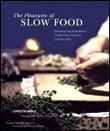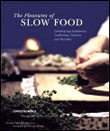In 2001, Eric Schlosser published Fast Food Nation — an expose of America’s increasingly consolidated and industrialized food system, and how that system contributes to a whole range of societal ills, from obesity and resistance to antibiotics to urban sprawl, habitat destruction, and poor labor conditions. The book was a smashing success — 66 weeks and running on the New York Times bestseller list — and it captured the nation’s attention in a way no book about food has since Upton Sinclair’s The Jungle, the 1906 classic about the Chicago meatpacking industry.
In a new afterword to Fast Food Nation‘s paperback edition, Schlosser says the reason his book struck a nerve didn’t have much to do with his prose, or even his politics, but rather with his timing. “Not just in the United States, but throughout western Europe, people are beginning to question the massive, homogenizing systems that produce, distribute, and market their food.” Indeed food — the most fundamental bond between people and the environment — is becoming a nexus for outrage and activism on issues ranging from globalization and trade to land use and conservation.
Two new books are riding the same wave of interest in food that launched Fast Food Nation to bestseller status. Marion Nestle’s Safe Food: Bacteria, Biotechnology, and Bioterrorism chronicles a recent rise in food-borne illness and consumer distrust of food companies such as Monsanto, and describes the downside of an increasingly homogenized food marketplace.
Despite repeated claims by industry and government that our food system is safe and our regulations sufficient to protect us, Nestle describes how oversight by federal agencies and voluntary measures by companies failed to prevent a number of food-borne crises: among others, deadly outbreaks of E. coli, salmonella, and other food pathogens; the rapid spread of mad cow disease in Britain and the demise of that nation’s beef industry; the appearance of genetically modified StarLink corn in tacos and nacho chips before the corn was certified for human consumption; and the contamination of ancient Mexican corn varieties by transgenic genes.
Drawing on her experience as a professor of nutrition and an advisor to the U.S. Food and Drug Administration, Nestle offers a lucid explanation of the science behind controversial food technologies and deadly food pathogens, and steers readers through a dizzying maze of PR wars, corporate strategies, and regulatory bureaucracies. Ultimately, she blames the recent food debacles on the rising influence of industry over government and consumers alike, and on a scattershot approach to regulation: Fully 35 different laws and 12 separate government agencies oversee food safety and consumer choice, and many of the agencies have conflicting responsibilities and mandates.
“The consequences of this system are famously absurd,” writes Nestle. “The USDA, for example, oversees the production of hot dogs in pastry dough; the FDA regulates hot dogs in rolls. The USDA regulates corn dogs; the FDA regulates bagel dogs. The USDA regulates pepperoni pizza; the FDA regulates cheese pizza.”
As the food industry becomes more globalized and entirely new technologies and diseases appear with increasing frequency, Nestle argues, the best hope for preventing future scandals and outbreaks is to create a single agency responsible for all aspects of food, from production to consumption. Without this kind of change, Nestle warns, looming threats such as bioterrorism and the development of resistance to antibiotics by a range of pathogens — including weapons-grade anthrax — could become a disastrous reality.
Nestle also makes the case for a regulatory system that acknowledges not only the science-based risk of different foods, but also the values-based concerns of consumers. Risk analysis of food safety should go beyond a cost-benefit analysis of sickness versus profit to address questions such as: Is biotechnology really the best way to alleviate world hunger? What are the environmental and societal consequences of certain food-production methods? Who decides what kind of choices consumers have in the marketplace? As a start, Nestle says, government and industry alike should embrace a transparent labeling system that would build trust in food producers and in government while allowing consumers to express their values through food choices.
While Nestle focuses on regulatory remedies to the ills of food homogenization, another new book about food describes a different tactic. In The Pleasures of Slow Food: Celebrating Authentic Traditions, Flavors, and Recipes, Corby Kummer writes about the rise of the Slow Food movement, which has grown from modest Italian roots to become the leading grassroots critique of fast food and fast-paced lifestyles across Europe and North America.

The Pleasures of Slow
Food
By Corby Kummer
Chronicle Books, 176
pages, 2002
The movement’s premise is simple: Food is central to human happiness, and celebrating food’s production and consumption in a slow and deliberate way can fill stomachs, revive communities and regional cultures, and help maintain biodiversity. And while some of the movement’s methods are quirky — one of its major projects is the Ark of Taste, a registry of rare food varieties replete with Presidia, or what Kummer calls “mini-SWAT teams,” poised to help artisans promote endangered foods — Kummer contends that Slow Food is working.
Through numerous restaurant and wine guides, the organization’s convivia (local chapters), and the Ark of Taste, the Slow Food movement is spreading the word about local and handmade foods and providing a forum for eating them. The movement links eating good food with education about the power of local cuisine to enhance ties within communities and to maintain cultural and biological legacies. Indeed, Slow Food’s recognition of the inherent relationship between food and a myriad of other social and environmental issues stands in sharp contrast to the industrialized food system, which strives to separate societal values from food production and looks to technology and standardization to solve problems of food safety and security.
With its focus on pleasure and taste, some have dismissed Slow Food as an elitist group that promotes exclusive foods for the pleasure of a few. But Kummer strives to portray Slow Food as a movement with a much more proletarian outlook. For instance, his rendition of the story of Carlo Petrini, Slow Food’s Italian founder, locates the roots of Slow Food squarely in the lap of the working class. Petrini started his career as a labor activist interested in promoting the needs of blue-collar workers in the Piedmont, Italy’s most industrial region. In order to create a gathering place and a forum for community activists, he and a few friends opened a small restaurant devoted to serving good, local food at low prices. The restaurant launched Petrini into a career as a commentator on the politics, philosophy, and history of food, and as an advocate for small-scale farmers and food producers struggling to stay in business.
Kummer also profiles 11 of the small-scale producers and chefs who embody the values of Petrini and the Slow Food movement. Michael O’Leary, a tattooed sailor, is one of the few working fishers left in Longboat Key, Fla., once a thriving fishing community but now an island dominated by resorts and wealthy retirees. O’Leary spends long hours on his fishing boat pulling up local stone crabs — a tasty relative of blue crabs — and selling them to restaurants and markets along the coast.
In New Hampshire, Stephen Wood’s cottage cider industry allows him to preserve remnants of what was once a breathtaking diversity of U.S. apple varieties. Wood grows at least five kinds of heirloom New England apples to make his cider, and in doing so helps shore up the variety and consumer choice that has been eroded by a fruit market increasingly dominated by the few apple types resilient enough to withstand being shipped across the globe.
As an added bonus, The Pleasures of Slow Food also includes 40 traditional recipes from around the world. The book’s structure — a history of the movement, profiles of its disciples, and recipes to enjoy — reflects the outlook of the Slow Food movement itself by helping readers celebrate the production and enjoyment of food that is good for people, communities, and the environment.
Both Safe Food and The Pleasures of Slow Food will become great resources for anyone interested in shifting the control of food from multinational corporations with billion-dollar bottom lines to consumers and small-scale producers. Nestle has written a book that untangles the science and politics behind food issues such as genetically modified crops and mad cow disease, and in doing so has provided a much-needed roadmap for consumers trying to navigate food-safety issues in the news — or in the supermarket. Meanwhile, The Pleasures of Slow Food presents the public with a new ethic to counter the fast-food system. By embracing Slow Food, consumers can help create a robust and local food system — one that could help eliminate food-safety issues before they begin, invigorate rural economies dominated by factory farms, and restore food’s role in connecting people to the natural environment.



